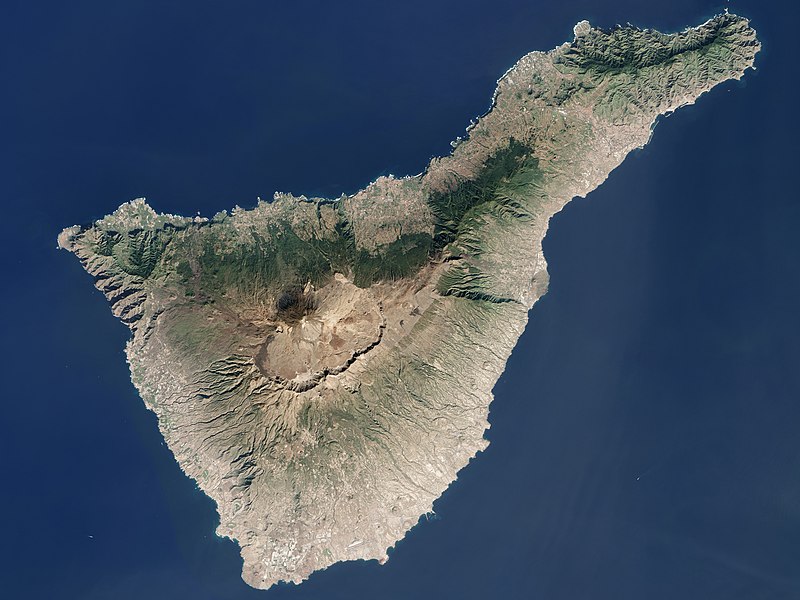ملف:Tenerife, Canary Islands.jpeg

حجم البروفه دى: 800 × 600 بكسل. الأبعاد التانيه: 320 × 240 بكسل | 640 × 480 بكسل | 1,024 × 768 بكسل | 1,280 × 960 بكسل | 2,560 × 1,920 بكسل | 6,000 × 4,500 بكسل.
الصوره الاصليه (6,000 × 4,500 بكسل حجم الفايل: 3.8 ميجابايت، نوع MIME: image/jpeg)
تاريخ الفايل
اضغط على الساعه/التاريخ علشان تشوف الفايل زى ما كان فى الوقت ده.
| الساعه / التاريخ | صورة صغيرة | ابعاد | يوزر | تعليق | |
|---|---|---|---|---|---|
| دلوقتي | 05:13، 12 مارس 2021 |  | 6,000 × 4,500 (3.8 ميجابايت) | StellarHalo | {{Information |Description=Detailed imagery can reveal components of the volcanism that helped shape Tenerife, the largest of Spain’s Canary Islands. But the wide view paints a more robust picture. The Operational Land Imager (OLI) on Landsat 8 acquired this image of Tenerife in its entirety on January 25, 2016. From summit to sea, you can see the transition between the caldera, the tree line, and the populated coastal areas. The summit of the Teide stratovolcano reaches 3,718 meters (12,198... |
استخدام الفايل
مافيش صفحات بتوصل للفايل ده.
استخدام الملف العام
الويكيات التانيه دى بتستخدم الفايل ده:


